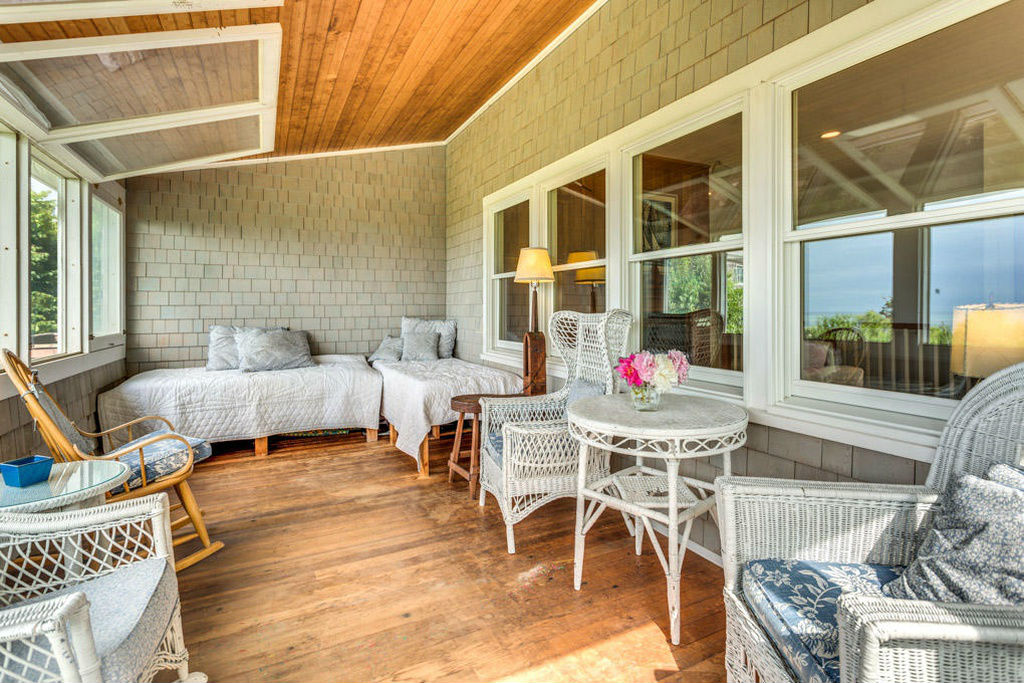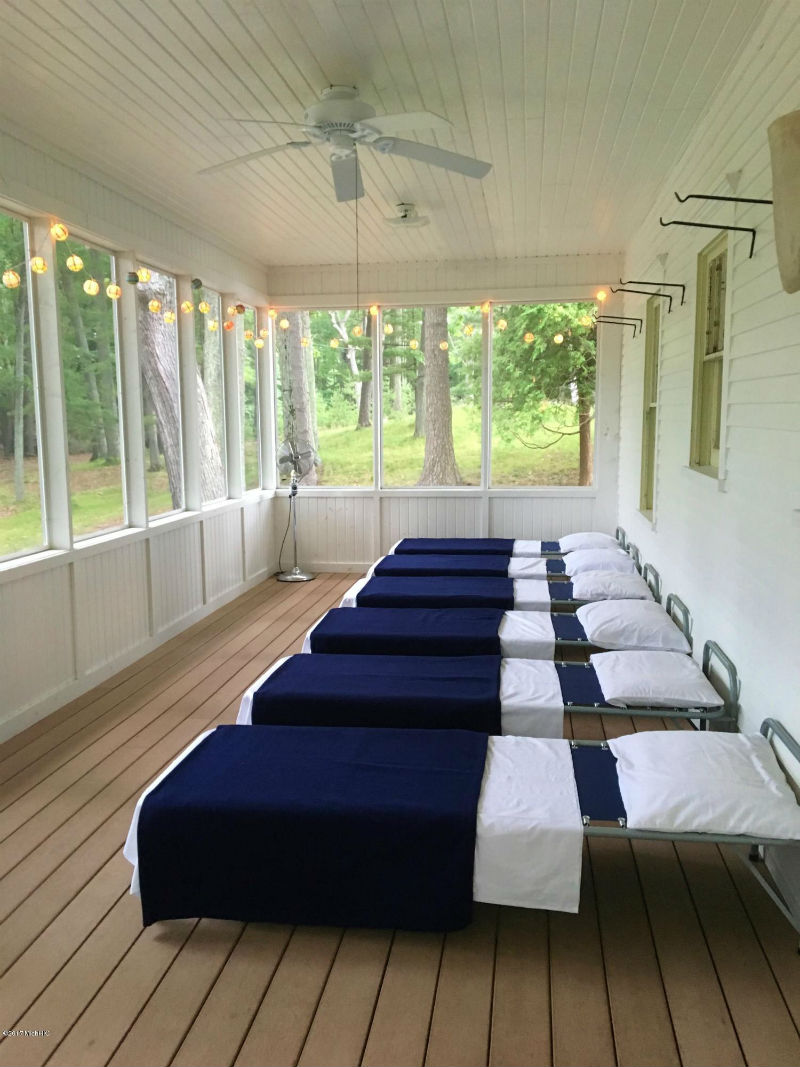We may earn revenue from the products available on this page and participate in affiliate programs. Learn More ›
As a youngster, one of the summer’s great thrills was “sleeping out,” usually on someone’s deck or porch, but sometimes even on the garage roof—any place where a gaggle of girls might giggle into the hours past their regular bedtimes. All these years later, adults across the country are rediscovering the simple joy of being lulled to sleep by cool night breezes and chirping crickets.
The sleeping porches often built into Queen Anne Victorians and Arts & Crafts-style homes provide just the space for all ages to enjoy nature’s version of a cooling system and white noise machine. These rooms were, in effect, screened decks and balconies adjacent to second- or third-story bedrooms, located on a corner to receive breezes from all directions. But many rural farmhouses had sleeping porches on the ground floor, and even some city apartments contained such spaces.
RELATED: 12 Seductively Serene Screened Porch Ideas
The house feature was extremely popular at the turn of the 20th century, when health professionals advocated sleeping outdoors as a way to bolster the immune system. And, prior to the advent of air conditioning, sleeping porches were especially popular in the South and the West, where it was cooler to sleep outside at night than inside stuffier rooms. In the evenings, the entire family might retire here to cots and mattresses!
Still Appealing Today
As lines between indoors and outdoors blur and homeowners focus more on turning the space just outside their door into full-fledged outdoor living rooms beneath pergolas, one could argue that these sleeping porches still have their place. Throwing open the curtains and shutters on a second-floor sleeping porch offers sweeping views of nature which tend to get incorporated into the look and feel of the space.
Plus, who doesn’t appreciate a good old-fashioned means to cool off without over-working your home’s HVAC system and driving up energy costs?
RELATED: 15 Old House Features We Were Wrong to Abandon
In fact, a 2008 survey from the National Association of Home Builders found that 63 percent of new home buyers consider a screened porch either desirable or essential. Whether they wish for it to be a nighttime escape or a daytime refuge, homeowners are indeed returning to the comfort afforded by the once-abandoned sleeping porch.
Today, many homes with sleeping porches have been fully enclosed and updated with the insulation and windows that would make these rooms conducive to central AC—not to mention use year-round. But you can retain some of the old charm of the original sleeping porch by outfitting the large windows with shutters, setting up a daybed with a canopy made from soft mosquito netting, and occasionally pausing the AC while you enjoy breeze through an open window.

How to Set Up Your Own Sleeping Porch
If you love the simple pleasures of a sleeping porch but your house didn’t come with one attached, you can still mimic the look on any existing deck, balcony, or porch. Here are a few things to keep in mind:
- Covering. The space should be covered against the elements and for safety, it should have at least a low railing around the perimeter.
- Screens. If you live in an area where bugs abound in summer, it probably goes without saying that screens are essential. Many choose also to integrate fabric shades or awnings, which can be lowered for privacy.
- Water- and fade-resistant fabrics and furnishings. Furnishings should be casual, comfortable, and resistant to the effects of water and sunlight.
- Sleeping arrangements. Since sleeping porches often serve as living areas during the day, fill these spaces with versatile pieces that perform more than one function. Consider a suspended bed doubles as a porch swing or daybed that doubles as deep seating.
- Ceiling fan. After all, the key to a comfortable sleeping porch is air circulation. Shop for a top-rated ceiling fan with our tips.
- Indirect lighting. You’ll get plenty of natural light from the big windows around a sleeping porch, but supplement these with some table lamps or flameless candles.
The most important thing to remember about sleeping porches is that they are for rest and relaxation. So grab a good book, a cup of tea, and a soft pillow, and curl up for a calm, peaceful, and soothing respite from the stresses of the day.


